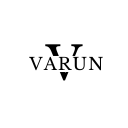How to Fill a Lean Canvas (with Examples)
QuickBite was born in a cramped Berlin kitchen, amidst leftover döner boxes and the desire to never eat another soggy salad again. But before code was written or a logo designed, the team sat down with a Lean Canvas. Not because it was trendy, but because they needed clarity.
This guide walks you through exactly how they filled it out—block by block—with lessons and a few bruises along the way.
Why Use a Lean Canvas?
Because guessing is expensive.
The Lean Canvas helps startup founders replace guesswork with structured thinking. It forces you to ask the hard questions early, and skip the fluffy ones. It’s startup therapy on a single page.
Download our free QuickBite Notion template → https://jainvarun.com/resources/lean-canvas-notion-template
Step-by-Step Guide to Filling Your Lean Canvas
1. Problem
What’s broken? And for whom?
QuickBite’s founders listed three core problems:
- Busy professionals had no time to cook or queue
- Most lunch delivery options lacked customisation
- Cold, late deliveries were the norm, not the exception
Start by writing three real problems. If you can’t think of three, you’re probably too early or too vague.
→ Learn more: Problem Block
2. Customer Segments
Who are you solving it for?
QuickBite focused on:
- Young professionals in tech/startups
- Remote workers in shared offices
- Health-conscious lunchers with dietary needs
Be specific. If your answer is “everyone,” try again.
→ Dive deeper: Customer Segments
3. Unique Value Proposition
Why you, not someone else?
QuickBite’s UVP: “Customisable, hot lunches delivered in under 20 minutes – for people who eat at their desk more often than at home.”
Make your UVP scream benefit, not buzzwords.
→ See UVP tips: Unique Value Proposition
4. Solution
How will you solve the top 3 problems?
QuickBite’s early solution:
- Hyperlocal kitchen hubs near office clusters
- Pre-set lunch customisation profiles
- Real-time delivery tracking
These were MVP-level solutions, not grand visions. Think first draft, not finished novel.
→ More on this: Solution Block
5. Channels
How will customers find you?
- Office Slack communities
- LinkedIn cold outreach
- Leaflets near co-working spaces
Don’t list every marketing channel. Focus on the ones your users already hang out in.
→ Explore further: Channels
6. Revenue Streams
How will you make money?
QuickBite started with:
- Per-meal pricing
- Subscription model for weekly lunches
- Upsells: drinks and desserts
It’s fine to start simple. Monetisation evolves, but clarity is key.
→ Deep dive: Revenue Streams
7. Cost Structure
What will it cost to deliver your product?
- Kitchen rental
- Delivery partners
- Packaging and fulfilment tools
Knowing your burn helps you know your runway. Be real, not optimistic.
→ Costing tips: Cost Structure
8. Key Metrics
How will you measure success?
- CAC vs LTV
- Order frequency per customer
- Percentage of repeat orders in 7 days
Pick metrics that matter today, not vanity metrics for pitch decks.
→ Metric frameworks: Key Metrics
9. Unfair Advantage
What do you have that others can’t copy?
QuickBite’s edge? They had early partnerships with local chefs, and a proprietary route algorithm designed by one of the founders—an ex-logistics PM.
Not every startup starts with one. But dig deep. It could be access, experience, insight or IP.
→ Understand better: Unfair Advantage
Downloadable Resources
- QuickBite Lean Canvas PDF Template: Download
- Editable Notion Template: Duplicate
- Example: QuickBite Lean Canvas (Filled): View
Final Bite
You don’t need a perfect canvas. You need a brutally honest one. QuickBite’s early canvas was scribbled, messy, and probably half wrong. But it helped them focus on what mattered most—customers and their problems.
Now it’s your turn. Don’t just read this guide. Fill your canvas, test your assumptions, and sharpen your startup’s soul.
